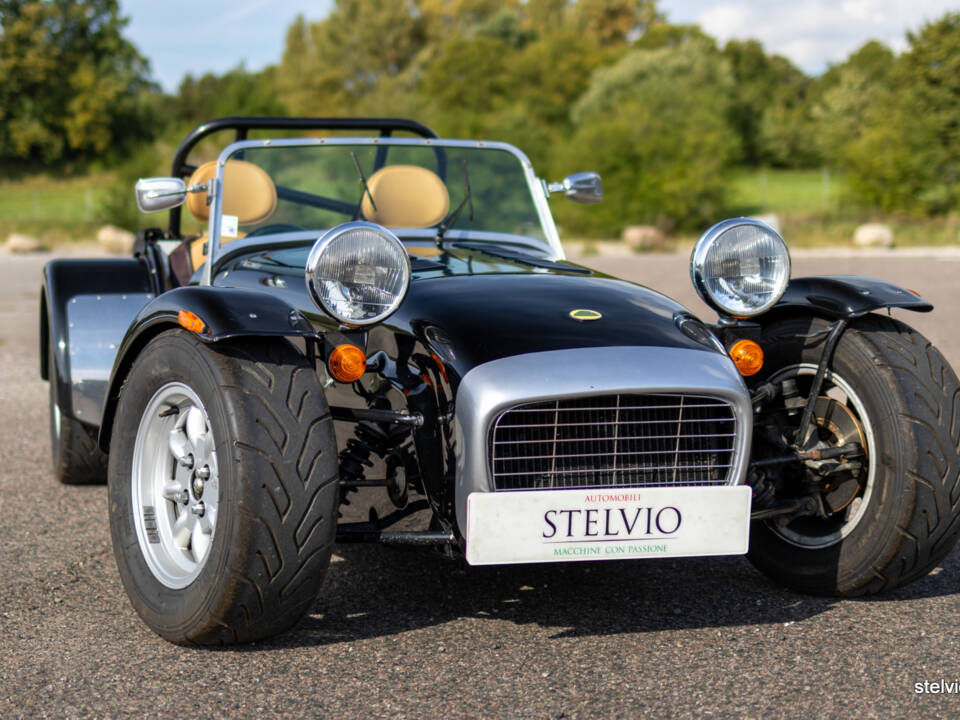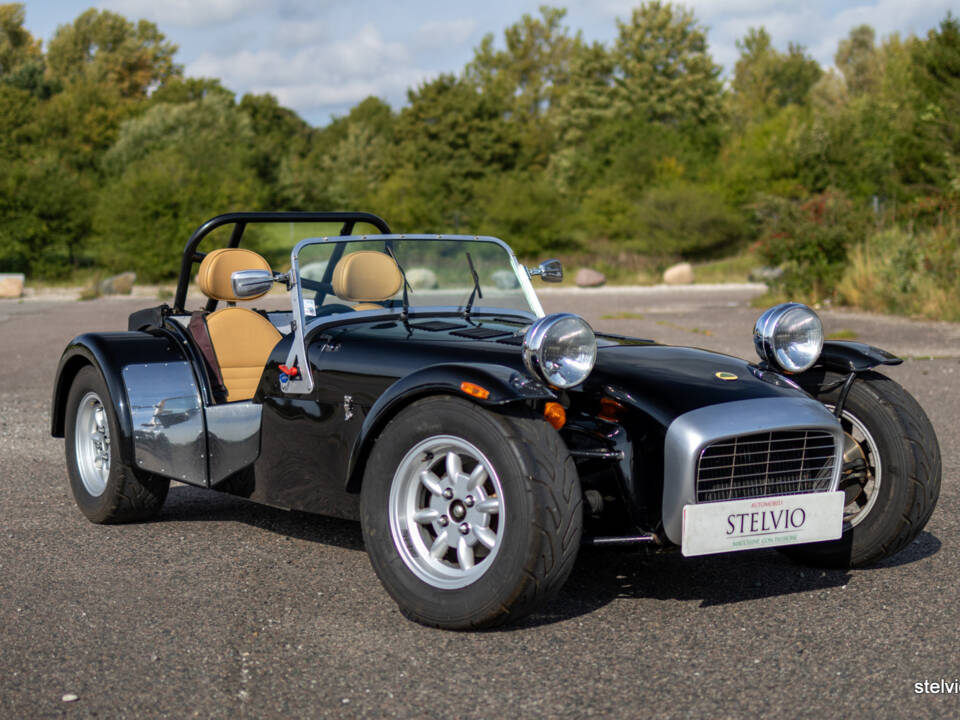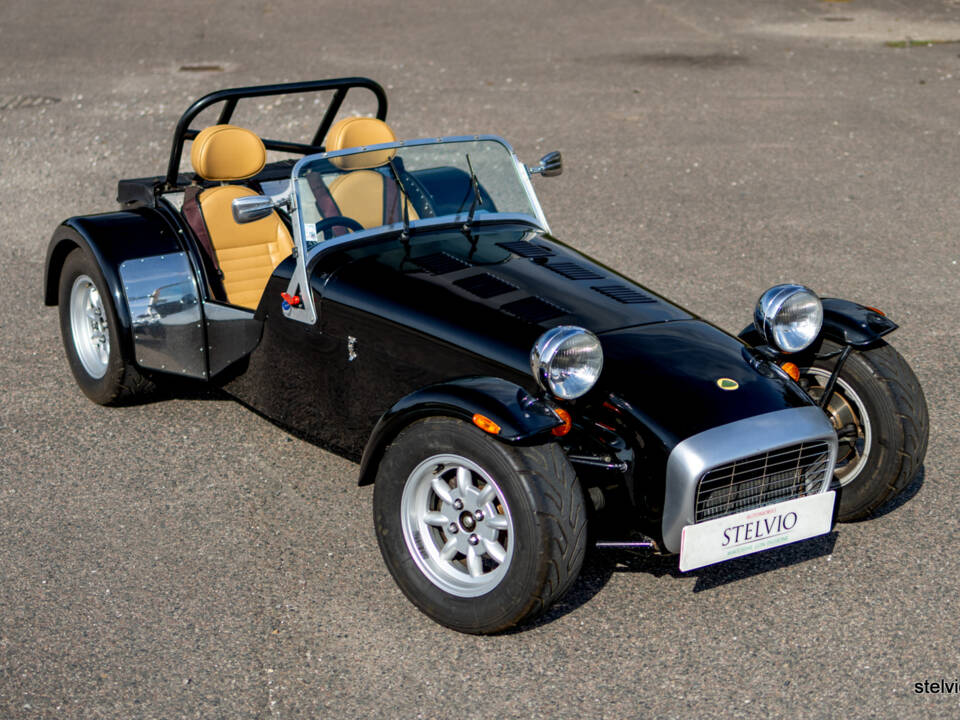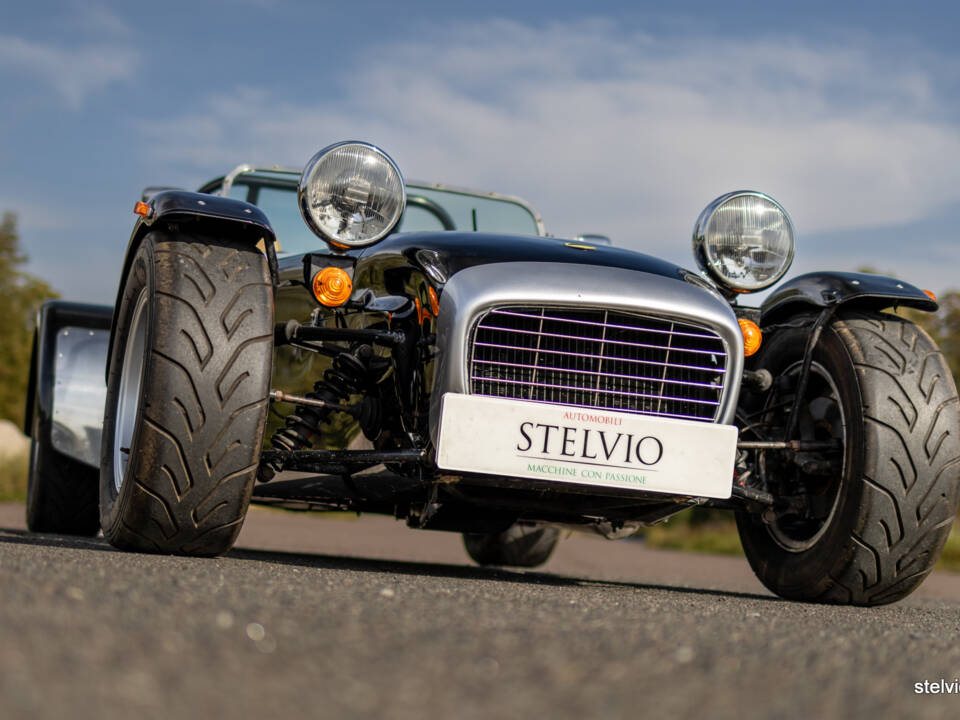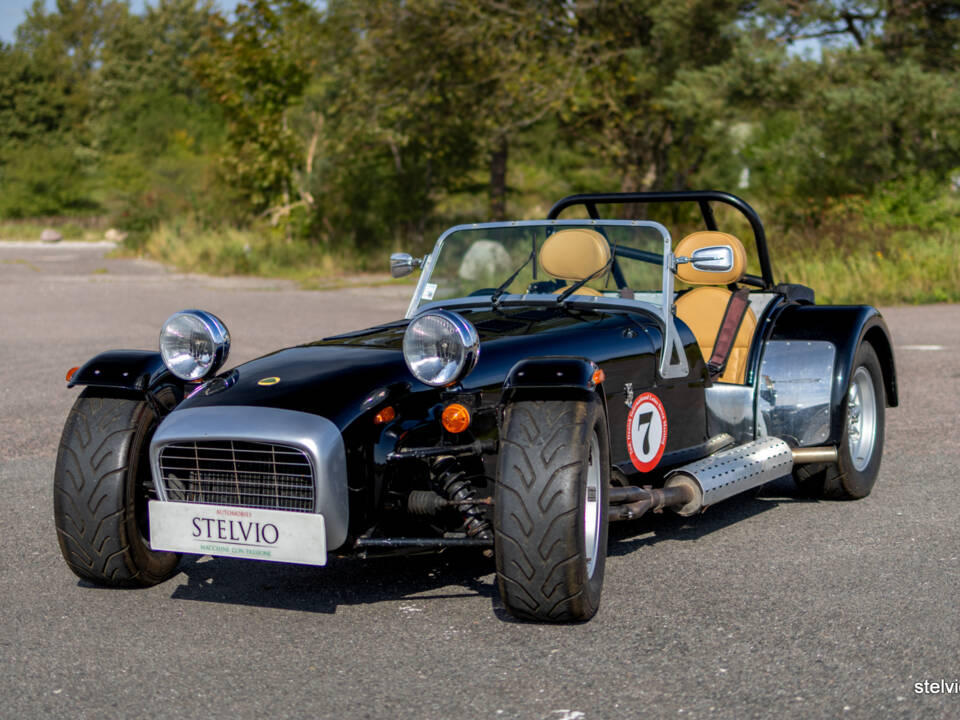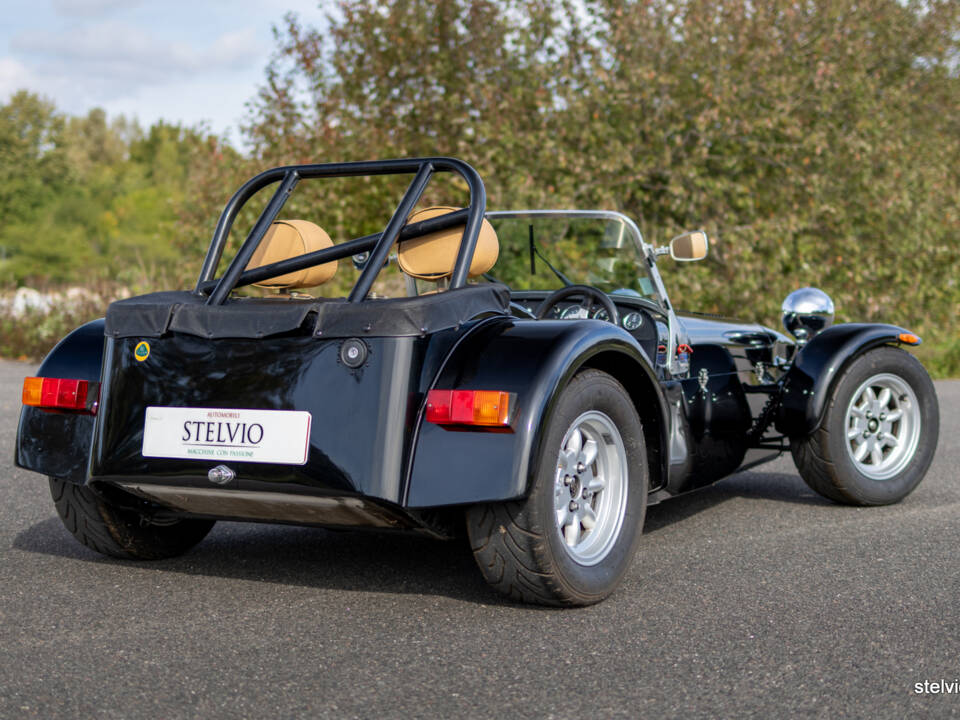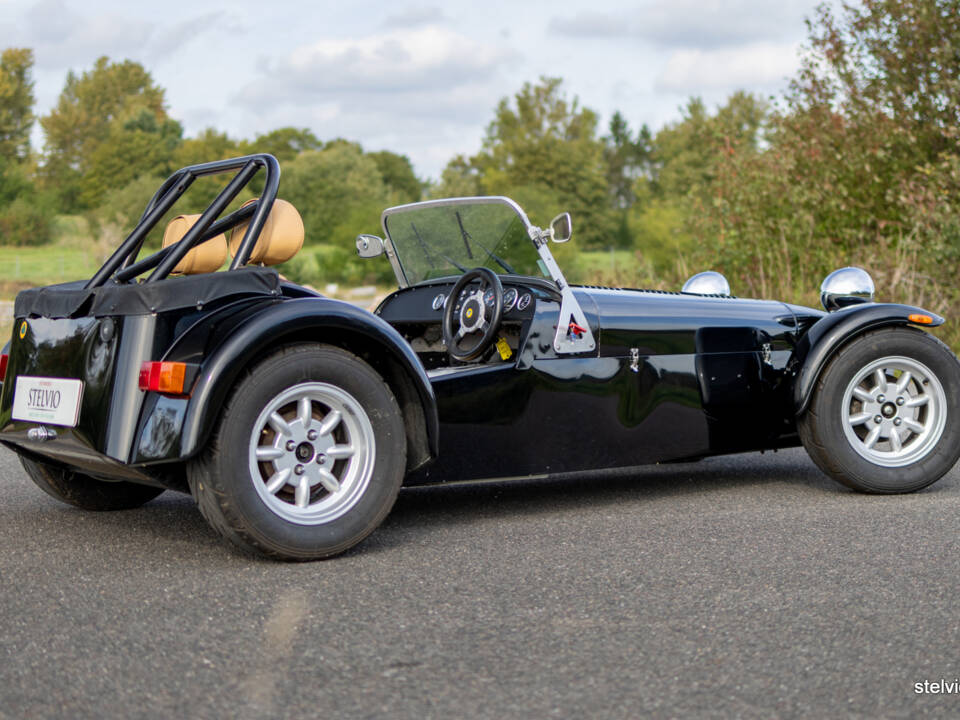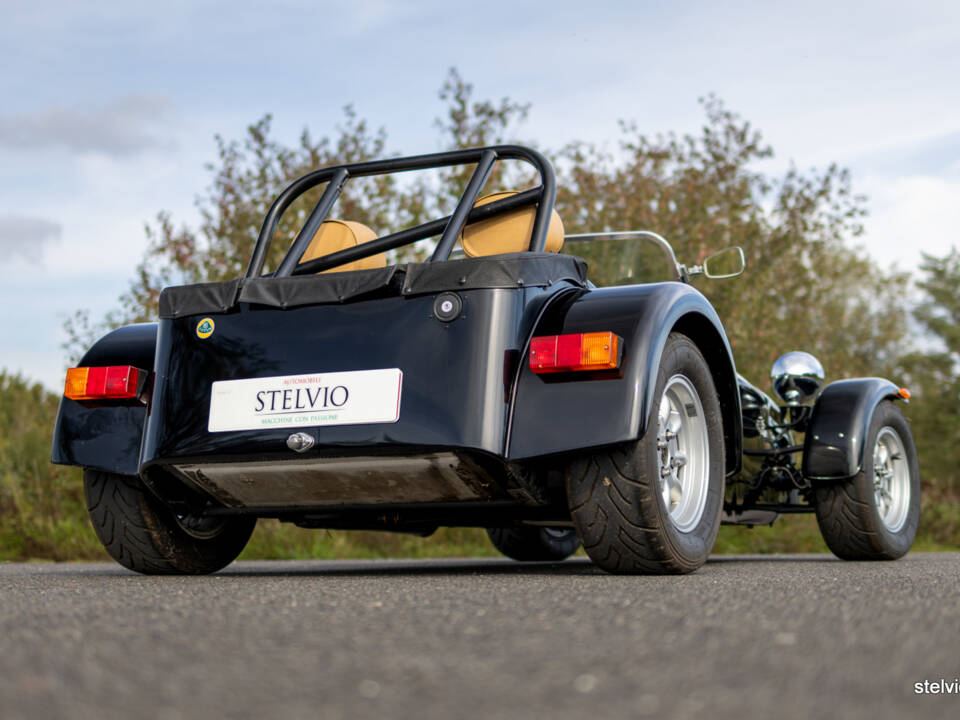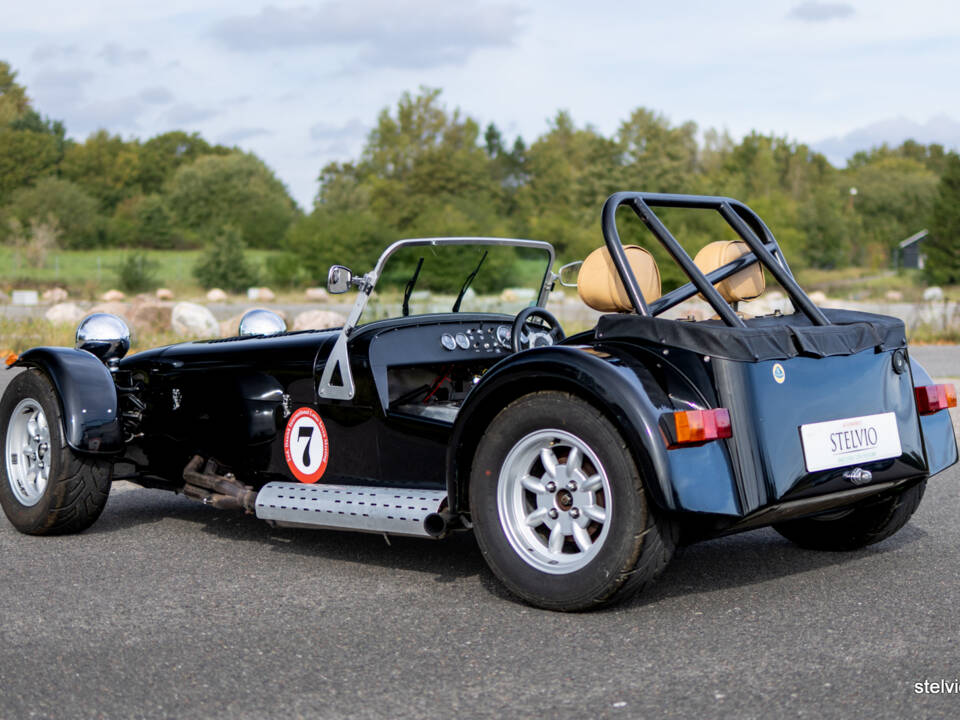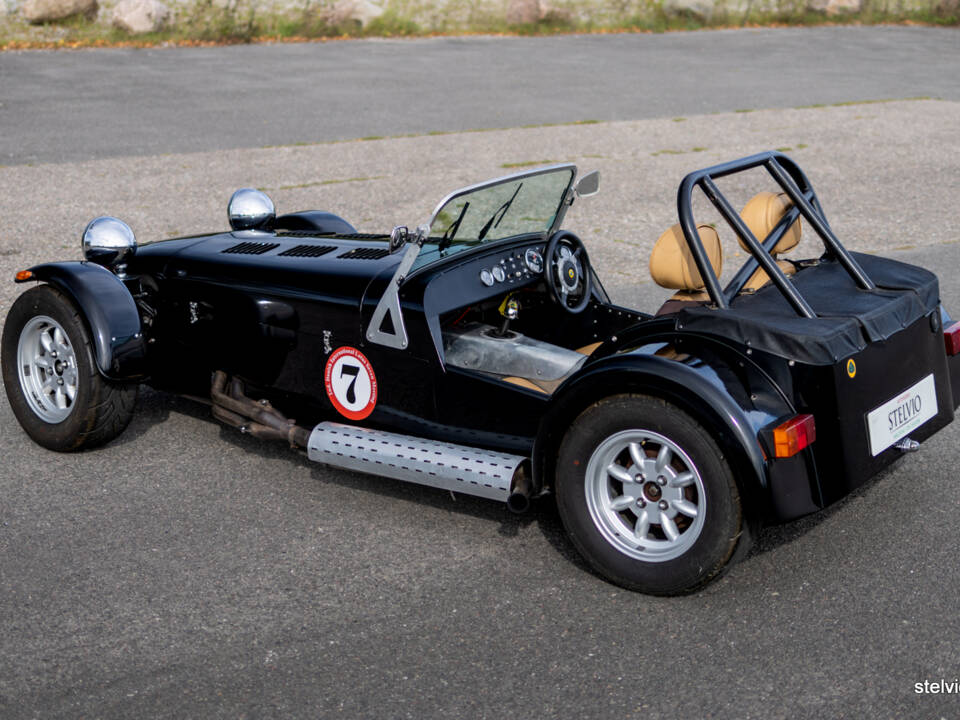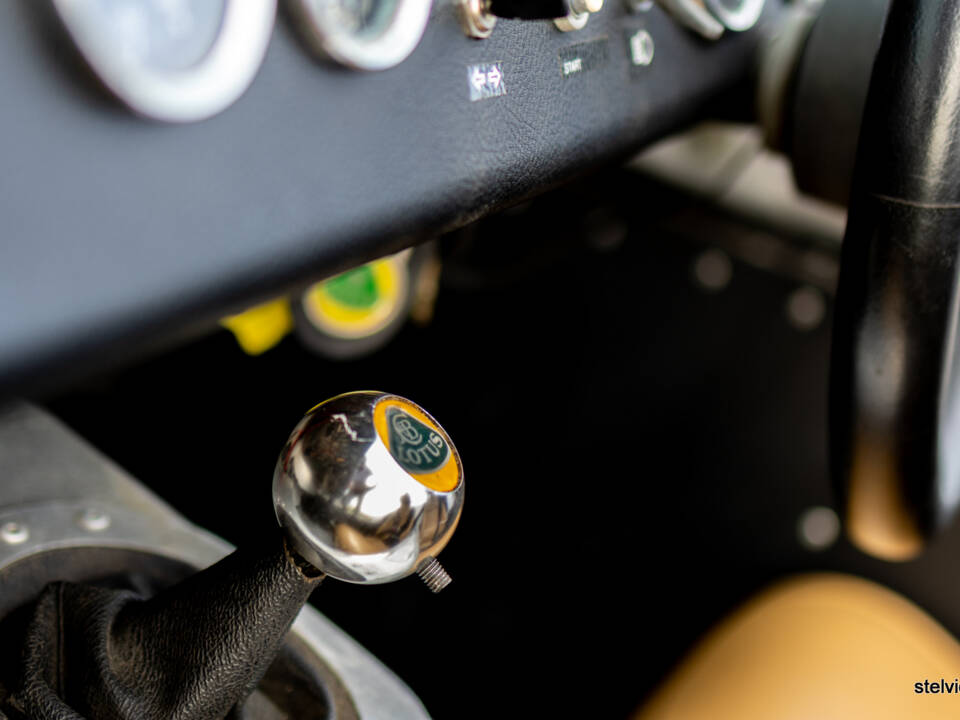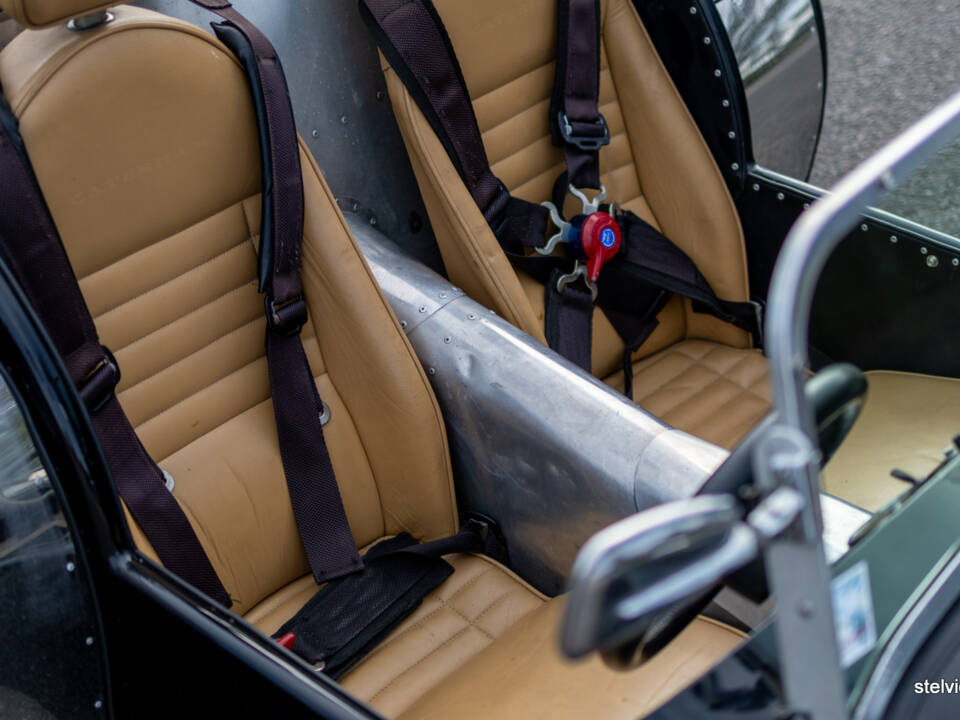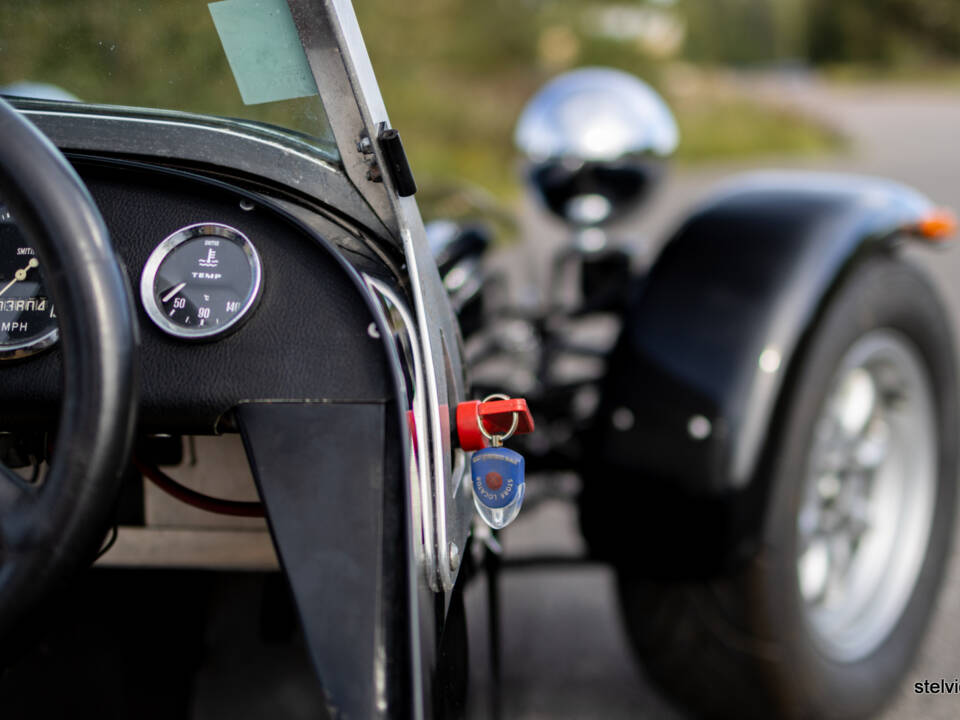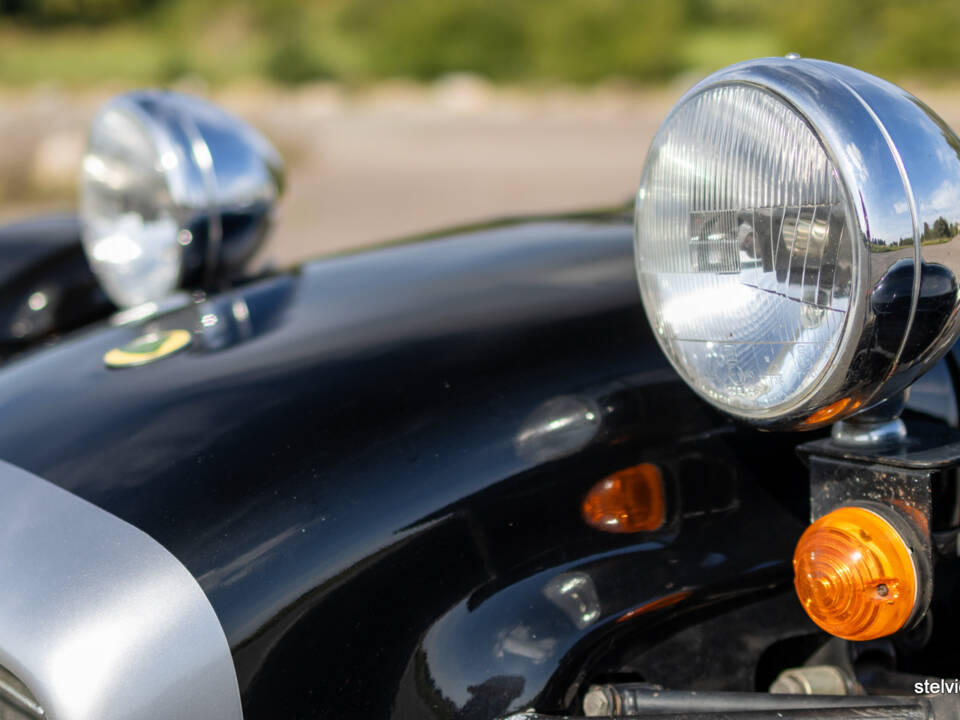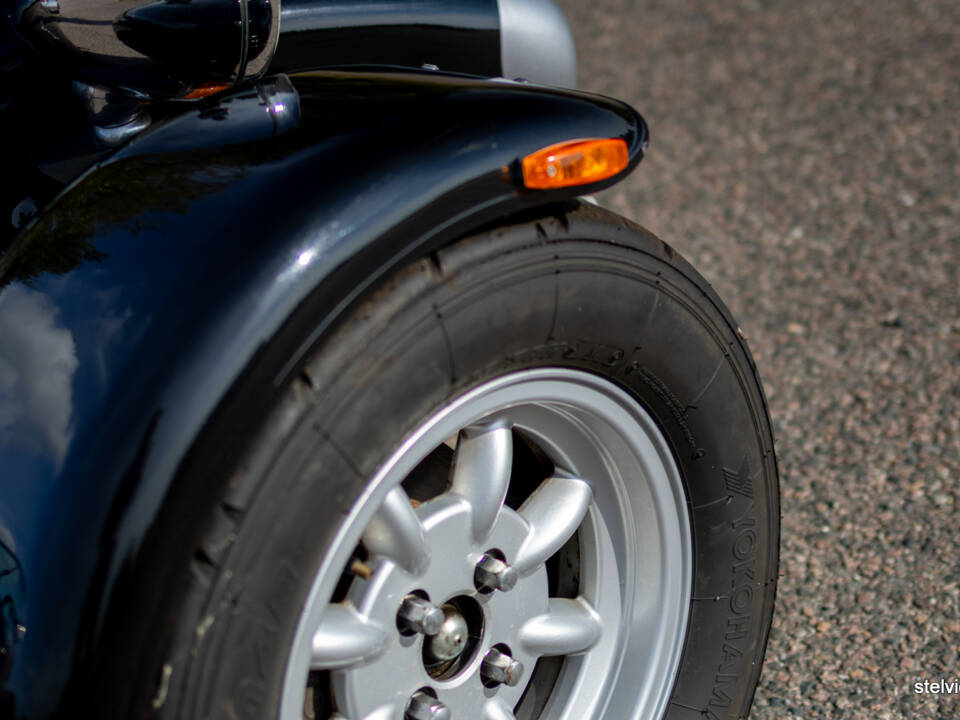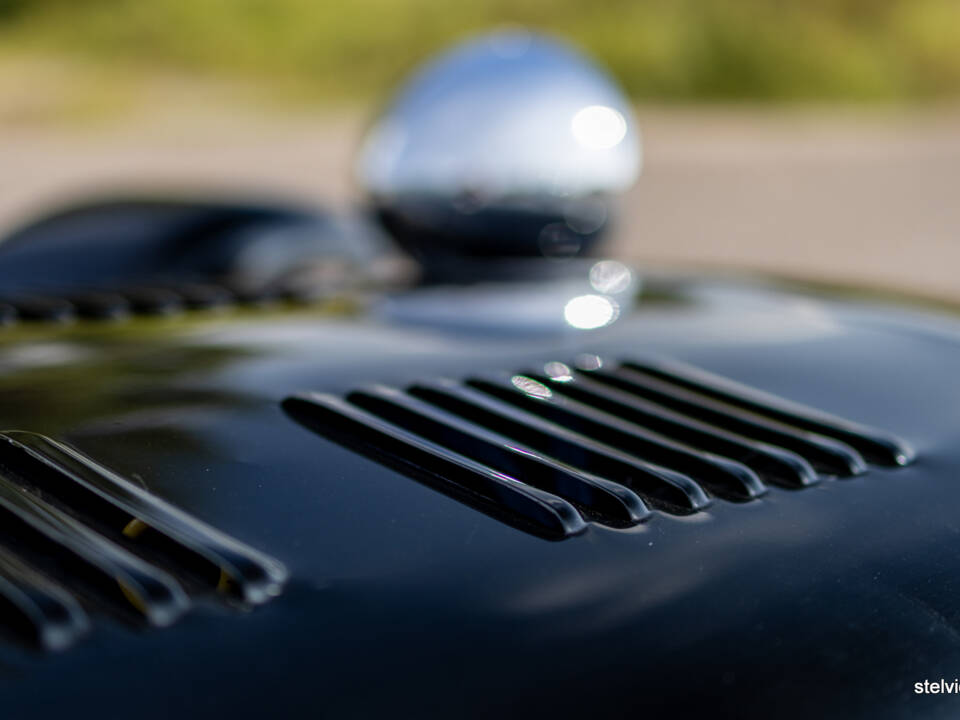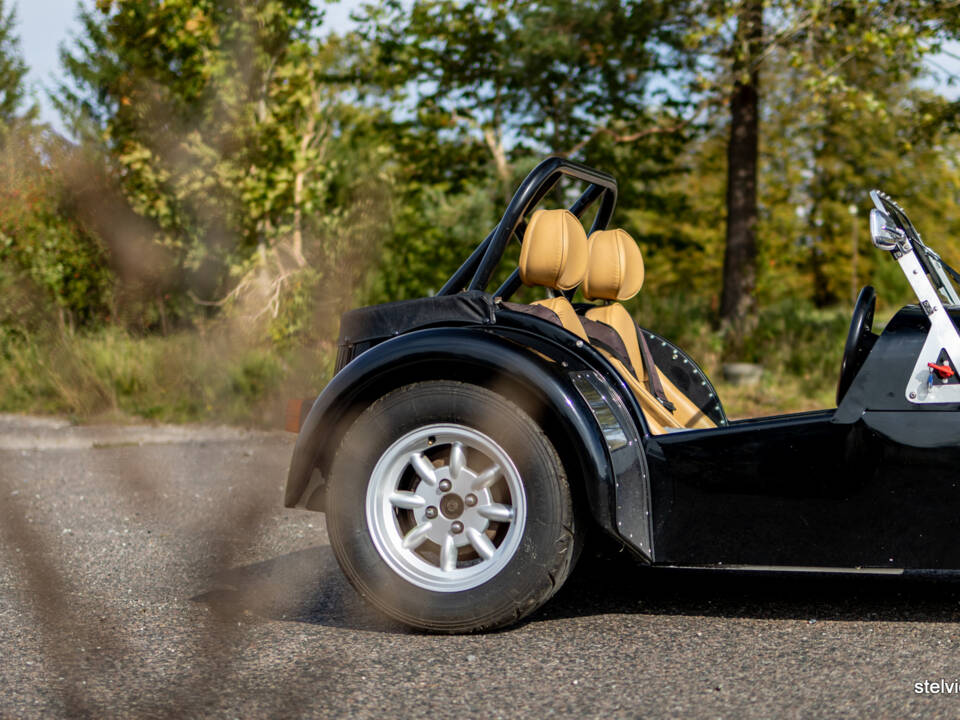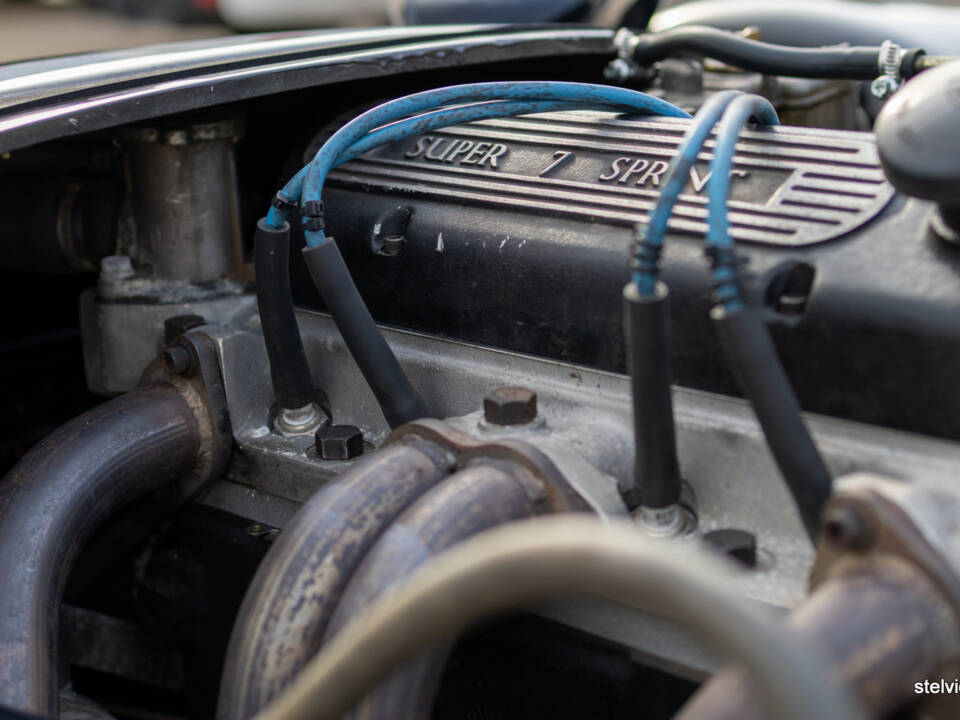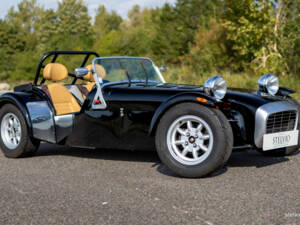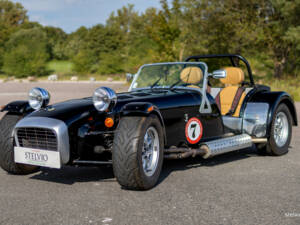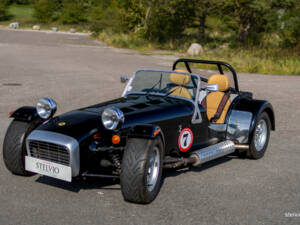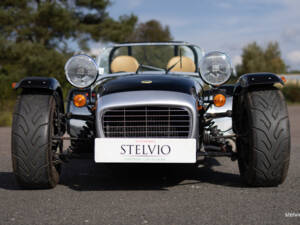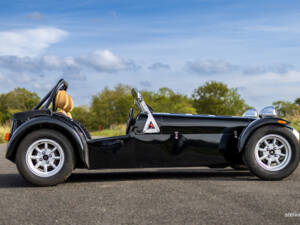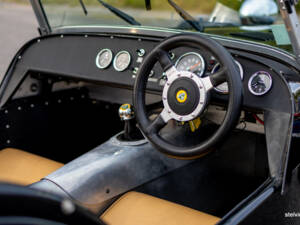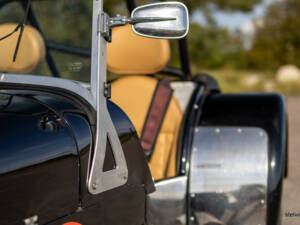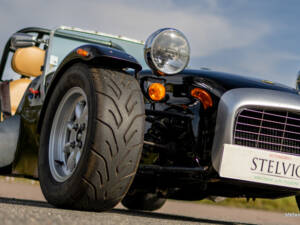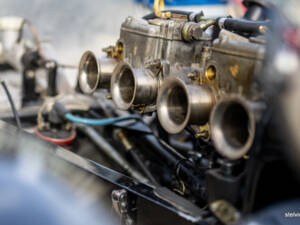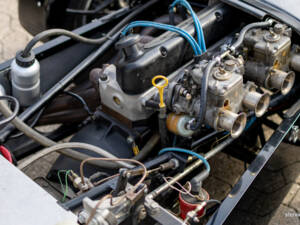1962 | Lotus Super
Series 2 with long cockpit and upgrades
Series 2 with long cockpit and upgrades
Series 2 with long cockpit and upgrades
Descripción
Colin Chapman was mad about cars when he started working for the British Aluminum Company in the 50’s. It was probably here his thinking of making his cars as light as possible was born. Light cars can manage with smaller and lighter engines, smaller brakes, smaller and lighter everything, and thus the whole design philosophy enters a good flow. Chapman’s cars raced with small engines in circles around heavier cars with twice the engine power or more.
When the Lotus Seven was presented in 1957 as a kit car, at first glance it resembled the predecessor model Lotus Six. Up through the 60s, it became increasingly refined into the Series 2 and Series 3, and with increasingly powerful engines. Lotus was far too small a manufacturer to produce engines and gearboxes themselves, so they sourced this from various suppliers. Right from the beginning, Ford engines from Anglia and Popular were used, then later the Coventry Climax and Ford’s ‘Kent’ cross-flow engines were used. Finally the Ford/Lotus 1600 Twin Cam arrived. In 1973 the Lotus dealer Caterham took over the sales and production rights from Lotus, and continued the production of the small Seven, hereafter called the Caterham Super Seven.
However, this car presented here is a genuine Lotus Super Seven produced in 1962 and not one of the countless replicas that were built afterwards. The 1599cc Kent X-flow engine has been bored up to 1700cc, and fitted with a modified cylinder head from Vulcan Engineering. Equipped with two lovely classic double Webers, which ensure free breathing and gives you the roaring sound as well. It is all trimmed in by a well-known Lotus expert, and the result is impeccable. The engine is extremely fresh, and combined with suspension upgrades, it just drives as only a Seven can. It gives you one of the most intense driving experiences you’ll get in any car that can be registered for use on public roads – regardless of price! It’s raw, it’s direct, it’s fast and you always get home from a drive in a Seven with a sweaty grin that goes from ear to ear. Highly addictive!
This car is known far and wide in the Lotus community. Originally imported from England in 2004. Upgraded to the long cockpit version and with new adjustable seats from Caterham and with full weather gear. A large binder with notes, invoices and lots of history is included, testifying to genuine enthusiast ownership over the years.
Detalles del vehículo
Datos del vehículo
- Marca
- Lotus
- Serie del modelo
- Seven
- Modelo
- Super
- Código fabricante
- Serie III
- Primera fecha de registro
- No provisto
- Año de construcción
- 1962
- Kilometraje (leer)
- 3800 mls
- Número de chasis
- No provisto
- Número de motor
- No provisto
- Número de la caja de cambios
- No provisto
- Coincidencia de números
- No provisto
- Número de propietarios
- No provisto
Detalles técnicos
- Carrocería
- Convertible (Roadster)
- Potencia (kW/CV)
- 107/145 (Fábrica: 60/82)
- Capacidad cúbica (cm³)
- 1700
- Cilindro
- 4
- Puertas
- No provisto
- Manejo
- Derecha
- Caja de cambios
- Manual
- Marchas
- No provisto
- Engranaje
- Trasero
- Freno delantero
- No provisto
- Freno trasero
- No provisto
- Combustible
- Gasolina
Configuración individual
- Color exterior
- Negro
- Color interior
- Beige
- Material interior
- Cuero
Condición, registro y documentación.
- Tiene peritaje
- No provisto
- Condición
- Informe de inspección del libro
- Matriculado
- Listo para conducir
Ubicación
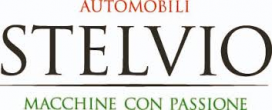
Stelvio Automobili
Stelvio Automobili Aps
Måløv Værkstedsby 93
2760 Måløv
🇩🇰 Dinamarca
